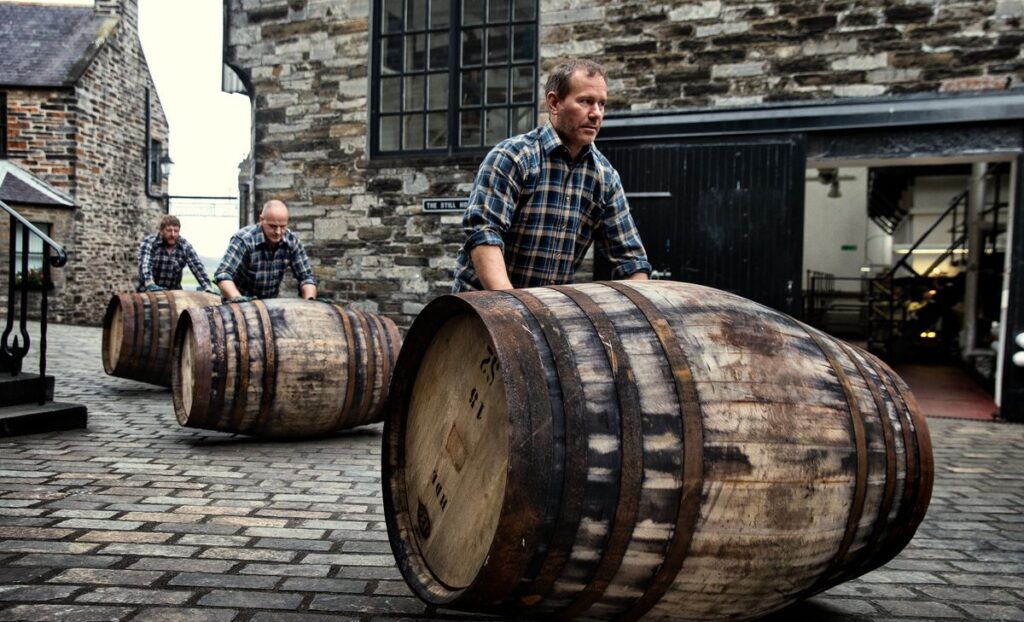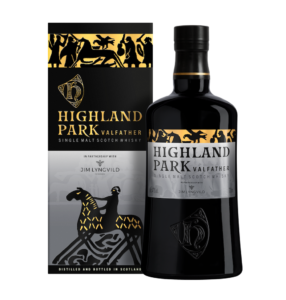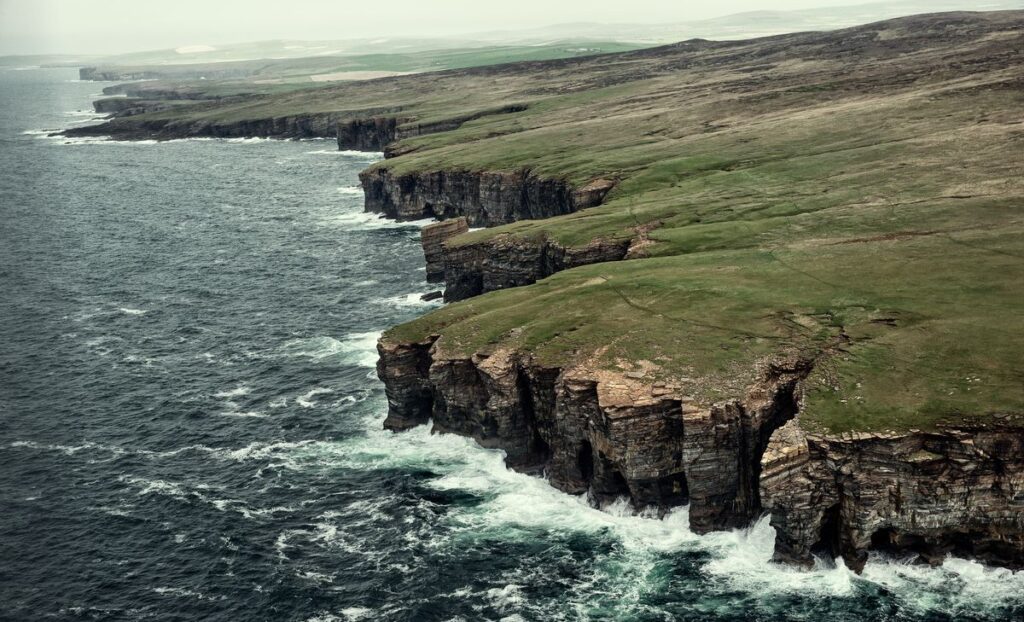Chill-filtration splits whisky drinkers. Here’s what it is so you can make your own mind up, plus some new bottles to try as recommended by our Master of Malt
MORE FROM SCOTLAND MAGAZINE
In whisky, as in most hobbies, if I am allowed to call whisky a “hobby,” there are geeks. They metamorphose from a relatively normal human being to someone who only drinks a particular whisky… someone who only drinks peated whisky… someone who only drinks cask strength whisky… someone who only drinks very expensive whisky — you get my drift. In this column, I am going to look at something in this regard that splits drinkers: chill-filtration.
Before a whisky is bottled, it is filtered because pieces of charcoal from the inside of the cask or pieces of the cask itself can drop into the spirit as it matures inside the cask. The industry does not want you, the drinker, to have to fish these items out of your glass. Prior to the 20th century, filtration was not a big issue; whisky bottles were either green or dark brown and opaque so you couldn’t see the liquid inside them. At the time a fairly basic filtration system was in place — not much more than a fairly fine gauze. With the advent of the production of clear glass bottles in commercial quantities in 1887, filtration became much more important. It didn’t look good if the bottle sitting on the shelf had bits of whatever lying on the bottom.
During cask maturation, lipids are extracted from the oak, together with long-chain fatty esters. These constitute part of the whisky’s flavour. Unfortunately, at below 45.8% abv (alcohol by volume), these can flocculate and form solids within the bottle if the whisky is sub-jected to very cold temperatures — say on the quayside at the Liverpool docks. These flocculants are harmless, but un-sightly. That is why some distillers, such as Springbank, Ben Nevis or Ardbeg, bottle at a minimum of 46% abv. In 1917, towards the end of World War I, the UK Government set a minimum alcoholic strength for Scotch whisky at 70 proof or 40.0% abv.
The industry discovered that, by reducing the temperature of the whisky to around 0°C, they could force the components that are sparingly soluble into a solid form and that these can be filtered out. Some blenders chill as low as -10°C. The geeks argue that chill-filtration should be banned because of the flavour elements that are removed by the process. The members of the industry, mostly the blenders, argue that their brands are very acceptable to their consumers in the form that they are presented, so they leave things as they are. In reality, chill-filtration does not remove a great deal of flavour, but there are nuances of flavour that are left within the filter.
As alcohol excise duty is based on the alcoholic content of the liquid rather than the value of the product, obviously that extra 6% abv between the minimum allowed and the point where flocculants naturally disappear adds extra expense to the bottle. And since most blended whiskies can be quite price sensitive, chill-filtration will continue. If the geeks didn’t have this to complain about, they would only find something else to vent their anger on.
Strangely enough, for this edition we have two non-chill-filtered whiskies. You see this symbiosis? One would think that it was planned!
The first is The Distillery Reserve Selection Longmorn 2007 from the distillery’s parent company, Chivas Brothers. This is a series of single cask bottlings the company has put together, so that there are a couple of bottlings out there around this degree of maturity. This one is 12 years old, a first fill sherry butt distilled on May 11, 2007 and bottled on June 13, 2019. It is a 50cl bottle and was bottled at 59.4% abv.
The nose is quite big-bodied, round and quite dark with warm sherried notes of beeswax, honeycomb, brioche and apple. Water brings out licorice, dried fruits (raisins and sultanas), charred oak and stewed apples. The palate is big, round, medium-sweet, very rich and de-liciously intense with a little spice and a buttery, creamy unctuousness, finishing long and rich with some demerara sugar and a touch of cinnamon on the tail.
This bottling (as well as the other whiskies in the range) is only available in person from one of Chivas Brothers’ distilleries or from an online seller such as The Green Welly Stop at (www.tyndrumwhisky.com) or Whisky International Online, (www.whiskyinternationalonline.com) for around £110 ($110 US).

 Highland Park has continued its series of Viking Legend bottlings with the third and final release: Valfather. This is inspired by Odin. Odin is called All-Father because he is the father of all the gods. He is also called Father of the Slain (Val-Father) because all who fall in battle are his adopted sons. With them, he mans Valhalla. This is the smokiest bottling that the distillery has ever produced. The nose is medium-bodied, rich and honeyed with an aroma of smoky pineapple. Syrup, vanilla and melon are released with water along with a little touch of the sea. The flavour is quite big-bodied, rich and medium-sweet with gentle tannins, crème brûlée, a little espresso coffee and toffee apples, finishing long and floral with some smoky fruit and a spicy pepper touch. It sells for £60 ($79 US).
Highland Park has continued its series of Viking Legend bottlings with the third and final release: Valfather. This is inspired by Odin. Odin is called All-Father because he is the father of all the gods. He is also called Father of the Slain (Val-Father) because all who fall in battle are his adopted sons. With them, he mans Valhalla. This is the smokiest bottling that the distillery has ever produced. The nose is medium-bodied, rich and honeyed with an aroma of smoky pineapple. Syrup, vanilla and melon are released with water along with a little touch of the sea. The flavour is quite big-bodied, rich and medium-sweet with gentle tannins, crème brûlée, a little espresso coffee and toffee apples, finishing long and floral with some smoky fruit and a spicy pepper touch. It sells for £60 ($79 US).
The Athletic Arms, this issue’s featured venue, is an Edinburgh institution that has served the public since 1897. It is affectionately known locally as The Diggers because it was the “local” where gravediggers from two nearby graveyards would quench their thirst at the end of a hard day. My first memory of The Diggers is as a stop for excellent beers after the rugby internationals at the relatively nearby Murrayfield Stadium. Heart of Midlothian Football Club’s stadium is also very close by. The current owner has run the pub for the past eight years and expanded the whisky list to in excess of 300, served in a 35ml measure, which was previously known as a quarter gill. The appearance of the bar is also very traditional with a marble-topped centre bar. The Diggers runs a whisky festival every year where the promoted whiskies are available for £2.50 a dram (about $3.25).

Details about Chivas Brothers’ extensive lineup of brands can be found at www.chivas brothers.com/about-us/brand-homes.
To learn more about Highland Park and its Viking Legend bottlings, visit www.highlandparkwhisky.com. Highland Park Distillery Visitor Centre, Holm Road, Kirkwall, Orkney.
The Athletic Arms, 1–3 Angle Park Terrace, Edinburgh EH11 2JX; www.athleticarms.com; telephone 0131 337 3822*.
*When calling Scotland from the US, enter “011 44” first, and omit the first “0” of the tele-phone number shown.
MORE FROM SCOTLAND MAGAZINE

SCOTLAND MAGAZINE
Published six times a year, every issue of Scotland showcases its stunning landscapes and natural beauty, and delves deep into Scottish history. From mysterious clans and famous Scots (both past and present), to the hidden histories of the country’s greatest castles and houses, Scotland‘s pages brim with the soul and secrets of the country.
Scotland magazine captures the spirit of this wild and wonderful nation, explores its history and heritage and recommends great places to visit, so you feel at home here, wherever you are in the world.